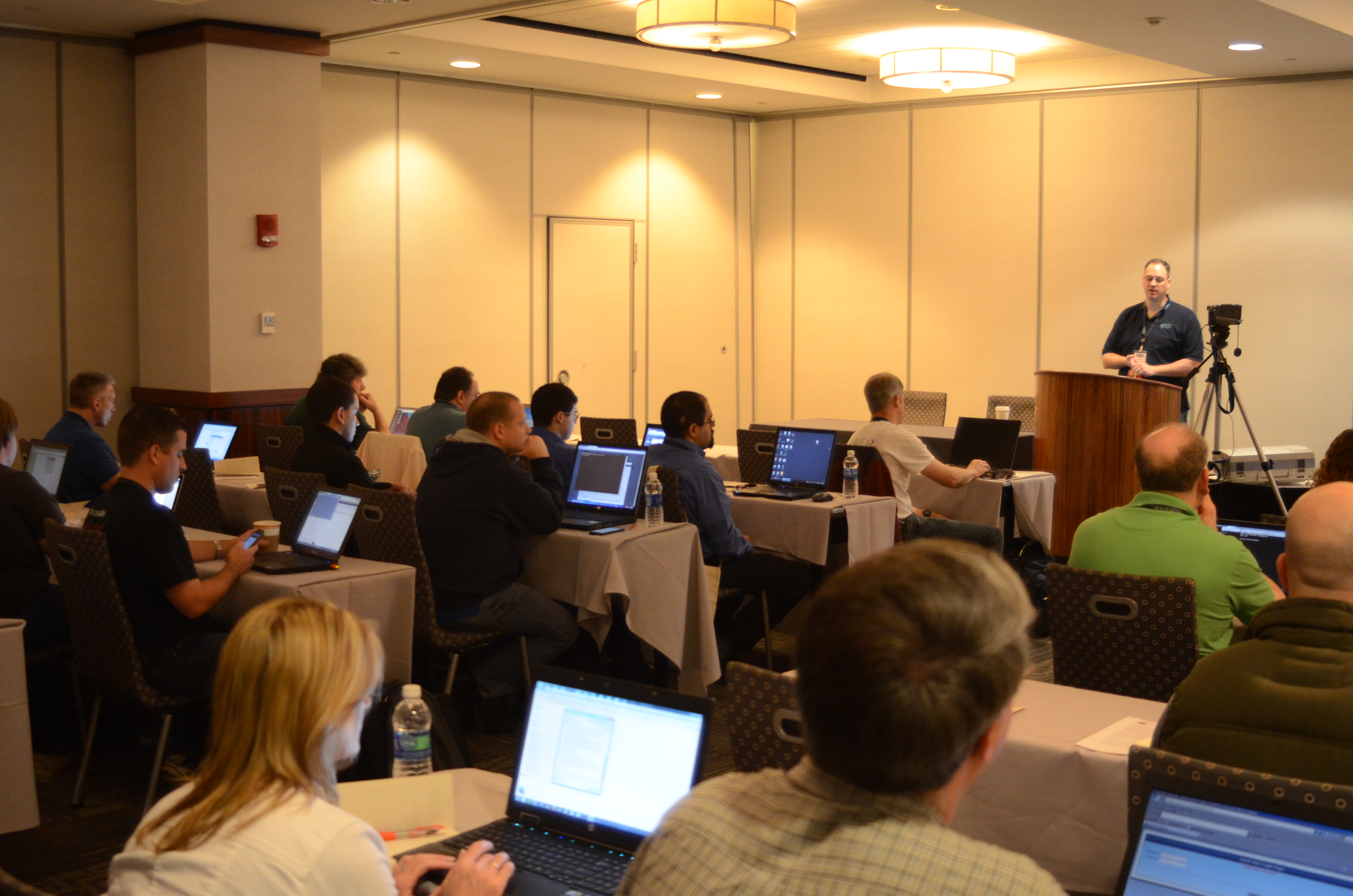
This file is licensed under the Creative Commons Attribution-Share Alike 3.0 Unported license. Please click directly on the image to view the image license information. Original image author: Matthew Simmons.
Something I have been interested in for a while is the difference between teaching someone something and training them to do something. With the rise of so-called “eLearning” in both business and education, the lines between the two terms are blurred. Is corporate education teaching or training? Is job skills education training or teaching?
The staff at The Centre for Innovation and Excellence in Learning (CIEL), where I work as learning technology support, has had many conversations about teaching and training at our staff meetings. The technology side of CIEL runs workshops nearly year-round on different technologies, and we have discussed at length how to make these more useful for the faculty who attend them.
What it all comes down to, at least in my opinion, is answering why. Why does the technology work that way, why do you have to do things in that order (and is there a better way)? “Why” is the difference between teaching and training – teachers help students understand the “why” of what they are doing, trainers simply want the buttons pressed in the right order.
It might sound like I am belittling the role of trainers – and I want to say that I am certainly not. There is a place for training and place for teaching, and often a little of both must be used to achieve the best outcomes for students and trainees. The really challenging question is when to train and when to teach.
If I don’t know a faculty member well enough to know what is going to work best for them, and if they perhaps aren’t sure what they want, I usually err on the side of teaching. I will help them go through the steps, but explain why we are doing things a certain way at all stages. I also tend to let the faculty member think more, struggle a bit, and then intervene when necessary. Much like when I was a high school tutor – nothing is gained when an answer is provided before other person gets a chance to think about it.
What does this all have to do with collaborating?

This file is licensed under the Creative Commons Attribution-Share Alike 2.0 Generic license. Please click directly on the image to view the image license information. Author: lumaxart
I noticed when I began supporting my cohort with Desire2Learn that I moved into much more of a training mode. Part of that has to do with the asynchronous nature of the support – I assume they have gone through the struggle stage before getting in touch with me. Communication via email also doesn’t lend itself to longer explanations – I know from experience a paragraph of text explaining something is generally a lot less approachable then a numbered list.
But is that approach really helping anyone? I’m hoping to get some feedback from my group nearer the end of Week 3 to see what they thought. Luckily, some of my group members are also faculty at VIU, so perhaps they can speak to the different approaches to support.
Hi Stephanie,
This raises an interesting question and I find myself wondering if it matters? I am sure it does but I guess I had not really thought about it. My initial thought is that training happens when it is associated with a job and teaching happens in education when there is a “teacher.” I decided to look a little deeper into these two words and this is what I found.
Dictionary.com defines
teaching as “to impart knowledge or skill; give instruction” and
training as giving or undergoing discipline, instruction, drill ect. for proficiency or efficiency.
I came to the conclusion that the why does matter but in the sense of why are we doing this session? IBM as an article written by Gary Pollice that helps explain the difference and states “training focuses on skill; the definitions imply a narrower focus than teaching and possibly a shorter time frame. We might associate training with the notion of exercises that we repeat until we “get” the skills we are trying to acquire – until they become almost second nature. The definitions for teaching, in contrast, imply deeper knowledge and a longer time frame. We often hear the term “lifelong learning,” but I can’t recall ever hearing about “lifelong training.”
From the articles I have skimmed over I would venture to say that prior to any training teaching had to occur first and then training can be used to help someone become proficient at something. In the case of the LMS systems, I would say that I am training someone who already has knowledge and a base of working in LMS but would be teaching someone who knows nothing about LMS and has never worked with it. Not sure if this is the same conclusions you have come to but thanks for raising an interesting topic 🙂
here is the article I was reading -http://www.ibm.com/developerworks/rational/library/3810.html
Hi Stephanie,
This was an interesting post to read because it got me thinking how, in my personal life, I experience both training and teaching with my kids. I know that with my youngest, who is one, I am constantly training her. I rarely explain why we do things, I only tell her how to do things ie. put on boots, blow nose, use stairs etc. With my three year old, I am doing a mix of both. Sometimes (usually when we are in a hurry) I am just calling out commands such as, “this shoe on this foot and the other shoe on that foot”. Other times I am finding myself in lengthy explanations of things that I know are way over his head but he keeps asking “why” so I keep going! With my six year old, I have to explain every little detail to him. He is not satisfied unless he knows why he is doing something. In all honesty, these in-depth explanations can be quite exhausting and I don’t always know the reasons why we have to do things. Sometimes we just have to do it! As I am writing this and reflecting on how much of my day is teaching versus training, I am realizing how important they both are and, like you said, the hard part is figuring out when to teach and when to train. I feel like I should spend more time teaching and less time training. I remember growing up and feeling frustrated that I had to do things just because mom or dad said so. This feeling must be similar for students with their teachers. In the online world of teaching, I think it looks like a combination of both. Take 504 for example. His class is so well organized in Canvas that we could do the requirements of the course without ever having a synchronous session. But if we did it that way, we wouldn’t have a chance to make the connections with our instructor and find out why he thinks it is important to learn what we are learning. Through him I completely understand why we do what we do and through Canvas, I see what it is I have to do. Now, after all of this rambling, I am going to be more aware of when I am teaching and when I am training 🙂